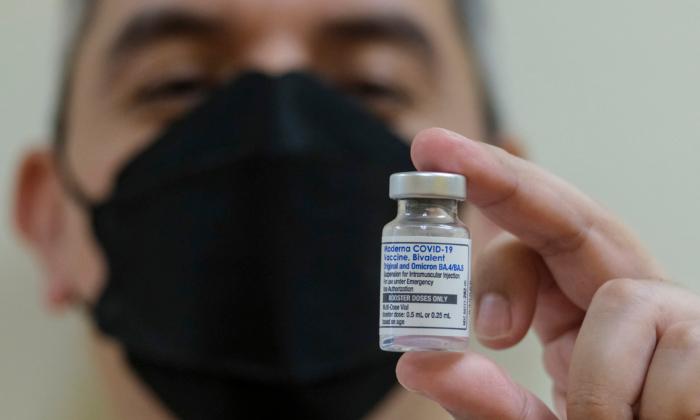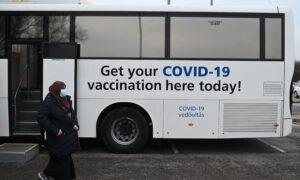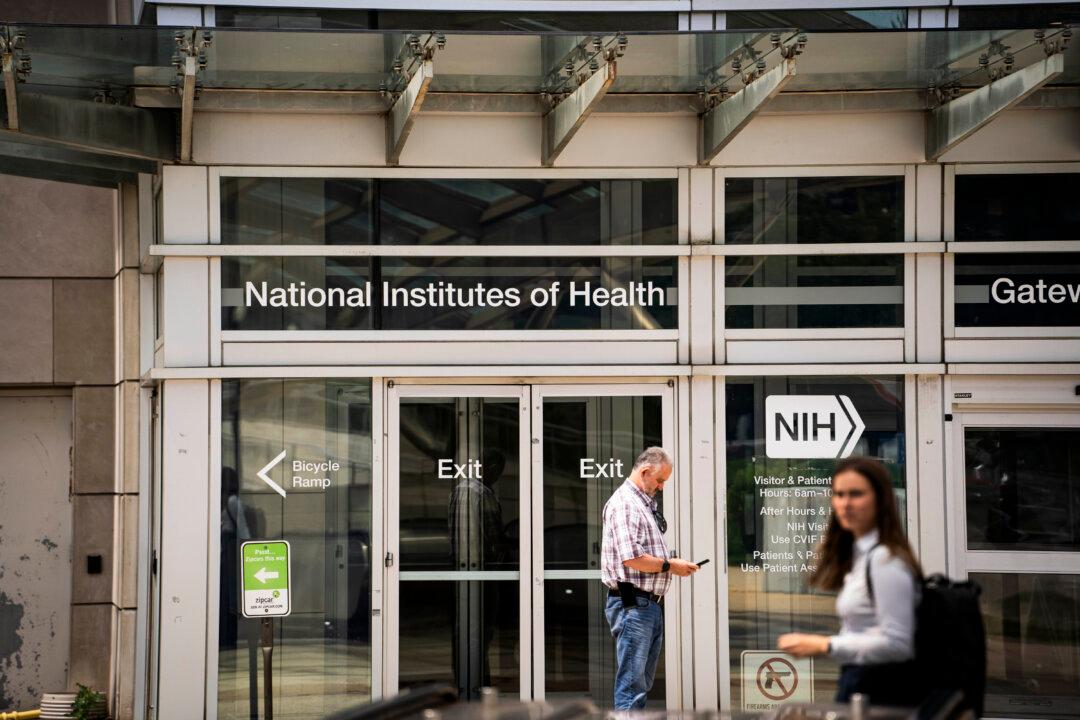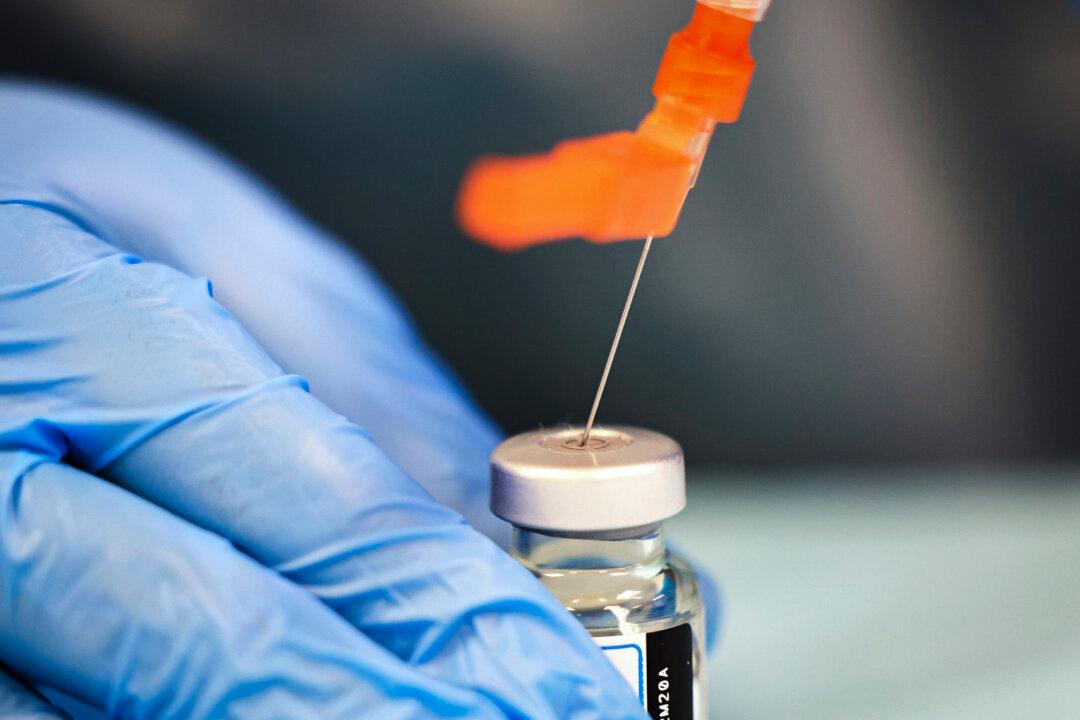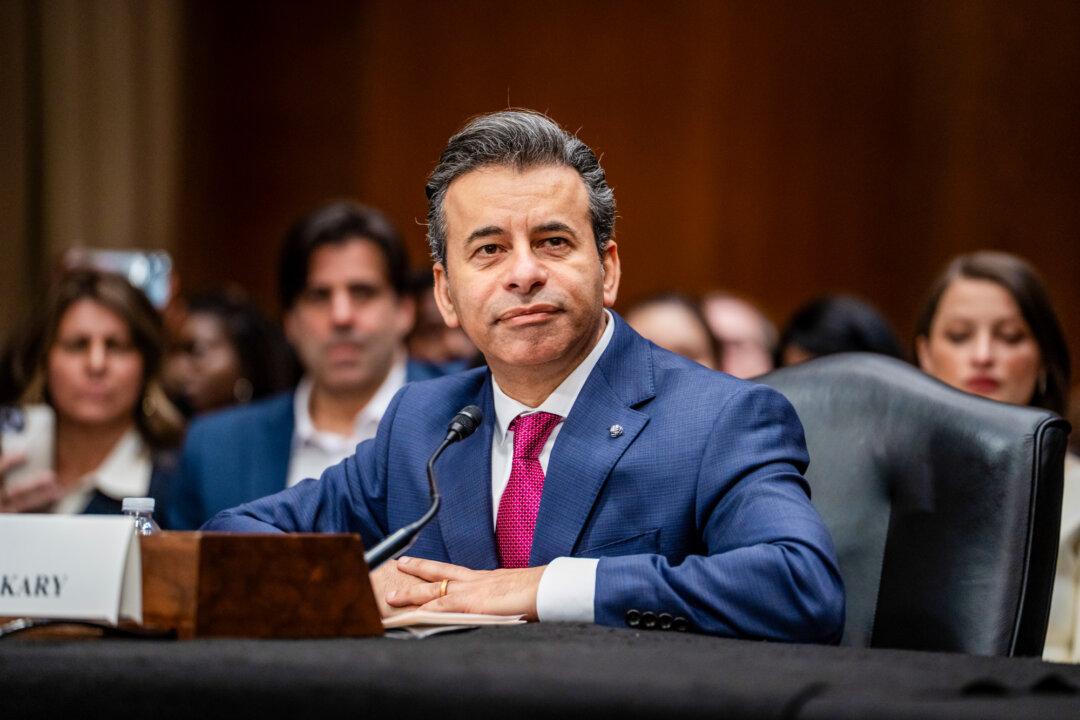Protection against hospitalization from bivalent COVID-19 vaccines quickly dropped over time, according to U.S. Centers for Disease Control and Prevention (CDC) data presented on Sept. 12.
For adults aged 18 to 64 with healthy immune systems, the protection from the old monovalent shots was just 15 percent, according to data from the CDC’s VISION network.
A bivalent shot increased the protection to 61 percent but that shielding fell to 15 percent between 60 and 119 days and to negative one percent beyond 120 days, CDC researchers found.
The protection held up slightly better among immunocompetent people aged 65 and older. In that population, the protection started at 67 percent before dropping to 53 percent in the middle time period and 28 percent beyond 120 days.
For adults with one or more conditions that have compromised their immune systems, the protection from a bivalent shot against hospitalization started at 31 percent. It increased to 40 percent between 60 and 119 days. It dropped to 12 percent beyond 120 days.
Other Numbers
Data from another CDC-run network, the Investigating Respiratory Viruses in the Acutely Ill (IVY), also showed protection from the bivalent shots against hospitalization quickly waned.Among immunocompetent adults aged 18 to 64, the protection from the old doses was just 20 percent. A bivalent booster increased that to 43 percent, but beyond 90 days the shielding dropped to 17 percent.
For immunocompetent adults aged 65 and older, the protection from monovalent doses was registered at just 1 percent. A bivalent booster upped the protection to 53 percent, but the protection plummeted to 10 percent beyond 90 days.
The protection remained higher in immunocompromised adults, starting at 55 percent initially after a bivalent and hitting 43 percent beyond 90 days.
The numbers were for Sept. 8, 2022, to May 31, 2023.
VISION data for young children, meanwhile, found that the protection from the old shots against emergency room and urgent care visits dropped to 24 percent beyond 60 days of a Moderna vaccination and 16 percent beyond 60 days of a Pfizer vaccination.
A bivalent dose increased the protection to 61 percent after 14 days. No longer-term data were provided for the children, who were aged 6 months to 5 years.
Those numbers were for Dec. 24, 2022, to June 17, 2023.
The effectiveness estimates showed waning, the CDC’s Dr. Ruth Link-Gelles said, but should be interpreted as finding an “incremental benefit” in a population “with a high prevalence of infection-induced immunity.” She also said pointed to low bivalent uptake among younger adults and that confidence intervals were wide for some of the estimates.
“The vast majority of persons of all ages have had COVID infection but having an updated COVID vaccine provides additional protection,” Dr. Sarah Long, a CDC adviser, said after hearing the presentation.
New Vaccines
The bivalent shots were cleared and recommended by the CDC in the fall of 2022, based on animal testing. The shots later replaced the original shots, which targeted the Wuhan strain.The bivalent vaccines contain components of the Wuhan and Omicron variants.
The FDA decides whether to clear vaccines while the CDC determines which populations should receive them.
The FDA said in memorandums detailing the decision that “there appears to be an inverse relationship between the time since vaccination and vaccine effectiveness, such that bivalent COVID-19 vaccine effectiveness against Omicron sublineages appears to wane over time.”
Safety Update
The FDA reviewed safety data from the earlier shots and determined the benefits of the vaccines outweigh the risks, such as myocarditis, a form of sometimes fatal heart inflammation.In the CDC meeting, officials said they identified two cases of myocarditis or pericarditis within seven days of a bivalent booster in the CDC’s Vaccine Safety Datalink network through March 11, 2023.
One case was in a male in the 18 to 29 age range. The other was in a male in the 30 to 39 age range.
The number of cases was much smaller than those verified after receipt of the old shots.
“No current evidence for an increased rate of myocarditis/pericarditis following bivalent boosters. Uptake was low in age groups expected to be at highest risk,” Dr. Nicola Klein, director of Kaiser Permanente Northern California’s Kaiser Permanente Vaccine Study Center, said.
Authorities also verified 247 cases of ischemic stroke among the elderly following bivalent Pfizer vaccination through Feb. 25, 2023.
Future studies may examine the incidence of stroke after concomitant bivalent boosters and influenza vaccines.
